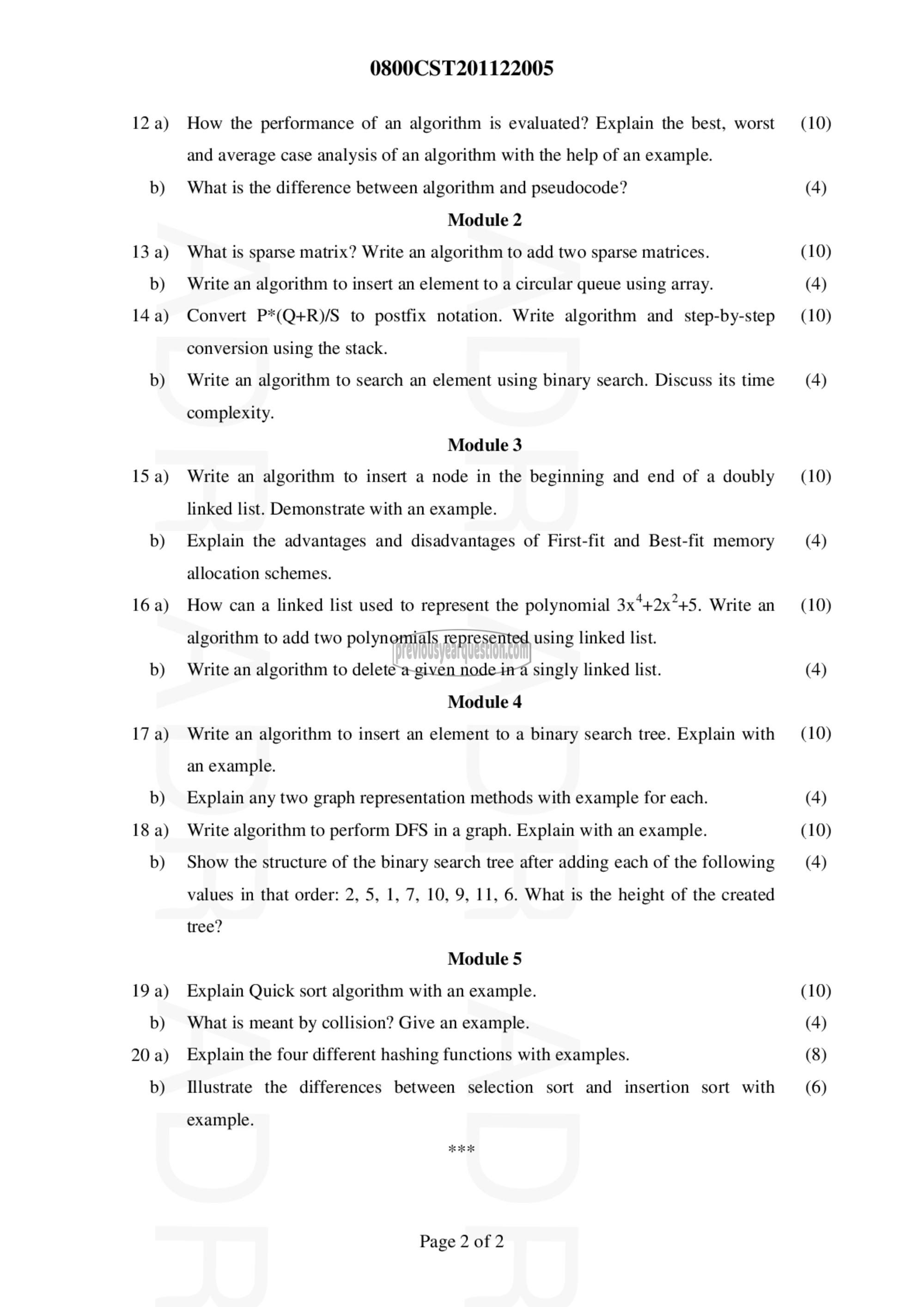APJ ABDUL KALAM TECHNOLOGICAL UNIVERSITY Previous Years Question Paper & Answer
Semester : SEMESTER 3
Subject : DATA STRUCTURES
Year : 2020
Term : DECEMBER
Branch : ARTIFICIAL INTELLIGENCE
Scheme : 2019 Full Time
Course Code : CST 201
Page:2
12 a)
b)
13 a)
b)
148)
0)
15 a)
b)
16 a)
b)
17 a)
b)
18 a)
b)
19 a)
b)
20 a)
b)
0800CST201122005
How the performance of an algorithm is evaluated? Explain the best, worst
and average case analysis of an algorithm with the help of an example.
What is the difference between algorithm and pseudocode?
Module 2
What is sparse matrix? Write an algorithm to add two sparse matrices.
Write an algorithm to insert an element to a circular queue using array.
Convert P*(Q+R)/S to postfix notation. Write algorithm and step-by-step
conversion using the stack.
Write an algorithm to search an element using binary search. Discuss its time
complexity.
Module 3
Write an algorithm to insert a node in the beginning and end of a doubly
linked list. Demonstrate with an example.
Explain the advantages and disadvantages of First-fit and Best-fit memory
allocation schemes.
How can a linked list used to represent the polynomial 34425245. Write an
algorithm to add two polynomials represented using linked list.
Write an algorithm to delete a given node in a singly linked list.
Module 4
Write an algorithm to insert an element to a binary search tree. Explain with
an example.
Explain any two graph representation methods with example for each.
Write algorithm to perform DFS in a graph. Explain with an example.
Show the structure of the binary search tree after adding each of the following
values in that order: 2, 5, 1, 7, 10, 9, 11, 6. What is the height of the created
tree?
Module 5
Explain Quick sort algorithm with an example.
What is meant by collision? Give an example.
Explain the four different hashing functions with examples.
Illustrate the differences between selection sort and insertion sort with
example.
मे मर मर
Page 2 of 2
(10)
(4)
(10)
(4)
(10)
(4)
(10)
(4)
(10)
(4)
(10)
(4)
(10)
(4)
(10)
(4)
(8)
(6)
